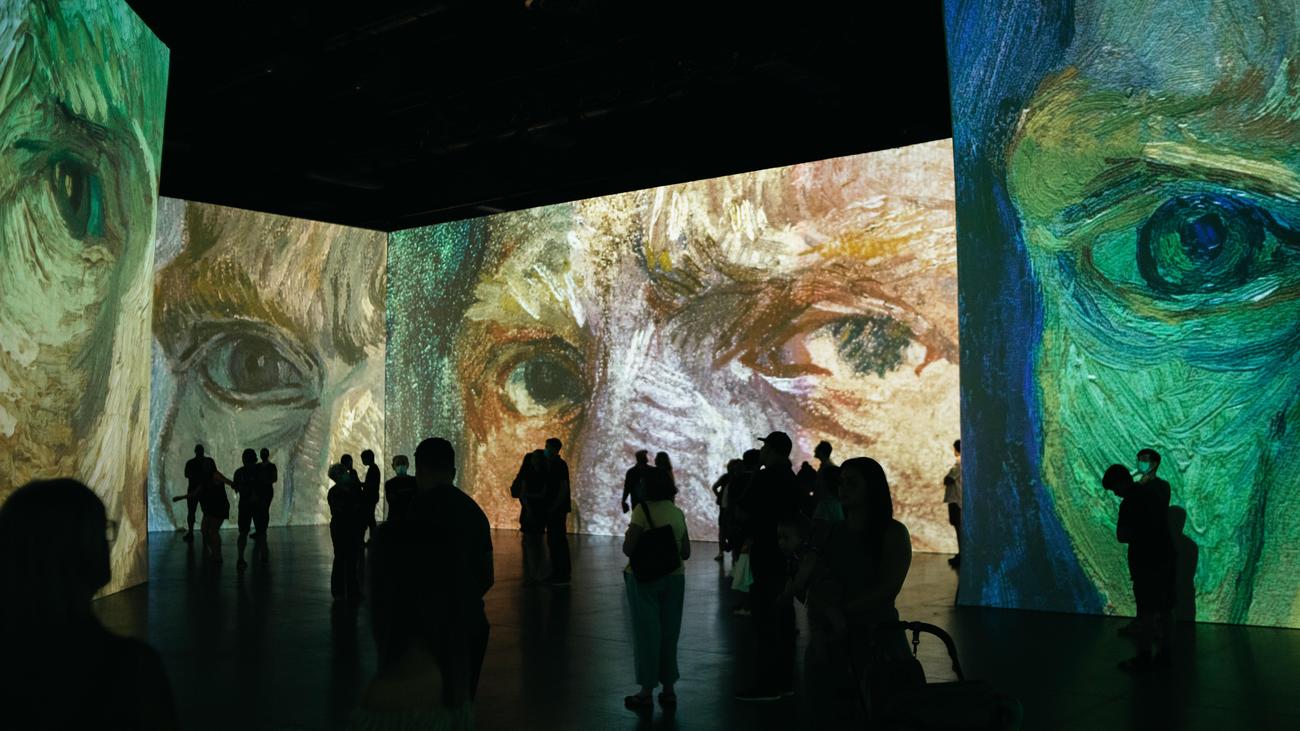Welcome to the captivating world of art facts! In this must-know guide for students, we will embark on an exciting journey through the fascinating realm of creativity and imagination. From the historical significance of renowned artworks to the techniques employed by masterful artists, this article aims to ignite your passion for art while equipping you with invaluable knowledge. So, get ready to delve into a world where brushstrokes tell stories, colors evoke emotions, and art becomes a gateway to understanding the human experience. Let’s uncover the captivating art facts that await you!

Art Facts For Students
Art is a fascinating world filled with rich history, renowned artists, and a variety of techniques. As a student, exploring the realm of art can not only ignite your creative spark but also provide valuable knowledge that goes beyond the canvas. In this article, we will delve into some intriguing art facts that will pique your interest and deepen your understanding of this captivating subject.
1. The Seven Elements of Art
To truly appreciate art, it’s important to understand its building blocks. There are seven essential elements of art: line, shape, form, space, texture, value, and color. These elements form the foundation of artistic expression and are used by artists to create visual compositions that evoke emotions and convey messages. By familiarizing yourself with these elements, you can start deciphering the hidden language of art.
“The seven elements of art serve as the palette for artists, allowing them to paint a vibrant and meaningful picture.”
2. The Oldest Cave Paintings
Imagine stepping back in time to around 64,000 years ago. It is during this era that the oldest known cave paintings were created. These remarkable works of art, found in caves across Europe and Indonesia, provide a glimpse into the lives of our ancient ancestors. Through intricate depictions of animals and scenes from daily life, these paintings showcase humanity’s deep-rooted connection to art and expression.
“Traveling through time, these ancient cave paintings reveal the enduring power of art, transcending generations and leaving a lasting mark on human history.”
3. Art at the Olympic Games
Did you know that art used to be a part of the Olympic Games? From 1912 to 1948, the Olympics awarded medals not only for athletic achievements but also for artistic endeavors. Competitions were held in categories such as sculpture, painting, architecture, literature, and music. Although it no longer holds a place in modern Olympiads, this historical fact highlights the recognition of art’s significance in society.
“For a brief period, the Olympics celebrated the artistic prowess of individuals, showcasing the harmonious blend of physical and creative talents.”
4. Roman Statues and Detachable Heads
When you think of ancient Roman statues, you might not expect them to have detachable heads. However, this was a common practice in ancient Rome. The detachable heads allowed the statues to be easily customized to represent different individuals, making them versatile and adaptable for various purposes. This peculiar fact adds an intriguing layer to the art of ancient Rome, where statues were not always a permanent representation of a particular person.
“Roman statues, with their interchangeable heads, demonstrate the versatility of art, allowing it to be shaped and reshaped to reflect the ever-changing narratives of its time.”
5. Picasso’s Priceless Paintings
Picasso, one of the most influential artists of the 20th century, has left an indelible mark on the art world. It comes as no surprise that his works command staggering prices in the art market. In fact, out of the top 25 most expensive paintings ever sold, five of them are by Picasso. This speaks volumes about the profound impact Picasso continues to have on the art world and the deep appreciation collectors have for his unique style.
“Picasso’s paintings, cherished for their innovative techniques and thought-provoking imagery, have proven to be priceless treasures that captivate art enthusiasts worldwide.”
6. Matisse’s Upside-Down Masterpiece
Art has the power to surprise and challenge our perceptions of the world around us. Such is the case with Henri Matisse’s painting, which was accidentally hung upside down during an exhibition. Surprisingly, the artwork still captivated viewers, prompting them to pause and analyze the composition from a fresh perspective. This incident serves as a reminder that art possesses the ability to spark curiosity and engage its audience in unexpected ways.
“Matisse’s upside-down painting proves that art has a unique ability to transcend expectations, capturing our attention and provoking thoughtful contemplation.”
7. The Mona Lisa’s Empty Wall
The enigmatic smile of the Mona Lisa is undoubtedly one of the most famous images in the art world. However, its theft in 1911 revealed an interesting phenomenon. Instead of deterring visitors, the empty wall where the painting once hung actually attracted more attention. During the two-year absence of the Mona Lisa, museum-goers flocked to see the vacant space, fascinated by the void left behind. This strange occurrence highlights the enduring intrigue and universal appeal of art.
“The power of art is so profound that even an empty wall can captivate and inspire, reminding us of its profound impact on our collective consciousness.”
Art Facts For Students continues…
Painting is a fascinating art form that has captivated humanity for centuries. If you want to delve deeper into the world of painting and uncover some intriguing facts about this creative pursuit, click here. Discover interesting tidbits and little-known information about famous painters, different painting techniques, and the evolution of this expressive medium. Expand your knowledge and gain a new appreciation for the art of painting. Are you ready to explore the enthralling world of painting? Then click here to uncover some amazing facts about painting.
Art Facts For Students
Are you interested in learning more about the fascinating world of paintings? Look no further! We have compiled a collection of intriguing facts about painting that will surely captivate your imagination. Whether you are a student, an art enthusiast, or simply curious about the art and culture surrounding painting, we have got you covered!
Let’s dive right in and explore some art and culture facts about painting. Did you know that each painting has a unique story to tell? From the brushstrokes to the colors used, every detail has a purpose and conveys the artist’s emotions and message. Discover the hidden meanings behind famous masterpieces and uncover the secrets that lie within.
For students who are curious about the world of art, we have a special treat for you. Our collection of painting facts for students will not only broaden your knowledge but also inspire your own artistic endeavors. Delve into techniques, styles, and even the history of art as you embark on a journey that will forever change the way you see the world.
Are you ready for something truly intriguing? Brace yourself for a glimpse into the mysterious world of painting. Uncover surprising facts that will challenge your perceptions and ignite your curiosity. From the unconventional materials used by artists to the hidden symbols and messages within renowned paintings, there is always more to discover, and we’ve got all the juicy details.
So, why wait? Click on the links below to explore the fascinating realms of art and culture surrounding painting:
Each link will provide you with a unique perspective on the world of painting. Get ready to be inspired, educated, and amazed as you embark on an unforgettable artistic journey.
Happy exploring!
Artist – Unlocking the World of Creativity for Kids
[youtube v=”VSJjVH-zYyk”]
The dream of becoming an artist is shared by many children who yearn to express their imagination and emotions through the power of paint and brushstrokes. From the mind of a young artist named Sebastian, we get a glimpse into the magical world of artistry and its limitless possibilities.
Sebastian’s passion for art takes him on a journey where he experiments with various styles and techniques. From abstract to portraits, he immerses himself in the art of storytelling through colors and shapes. Each stroke of his brush carries meaning and invites the viewer to interpret it in their own unique way.
One of the joys of being an artist, as Sebastian reveals, is the freedom to create something utterly original. With every canvas, he crafts a visual language that speaks to the heart and soul of each individual who gazes upon it. His art becomes a medium through which he not only expresses his own emotions but also connects with others on a profound level.
Sebastian’s creativity knows no bounds. He explores different mediums, including watercolors, and allows his imagination to flow freely. With a delicate mix of paint and water, he blends colors to create a soft and ethereal quality that brings his landscapes to life. It is through his art that he can transport himself and others to new worlds, where the boundaries of reality fade away.
The culmination of a young artist’s journey is the moment when their creations are shared with the world. Sebastian dreams of having his own studio and gallery, where people from all corners of the globe can marvel at his works of art. The joy he would feel, knowing that his art resonates with others and evokes emotions, is immeasurable.
The story of Sebastian reminds us of the power of art to transcend time and space. It is an ever-evolving expression of the human experience, reflecting our joys, sorrows, and dreams. Art speaks to us in a language that transcends barriers, inviting us to explore our own creativity and to embrace the beauty that lies within imperfections.
As Pablo Picasso once said, “Every child is an artist. The problem is how to remain an artist once we grow up.” Sebastian’s story serves as a reminder that we should never lose the childlike wonder and imagination that resides within us. Let us embrace our creative spirits and dare to imagine a world filled with artistry and boundless possibilities.
FAQ
What are the seven main elements of art?
The seven main elements of art are line, shape, form, space, texture, value, and color.
How old are the oldest known cave paintings in the world?
The oldest known cave paintings in the world date back to around 64,000 years ago.
Was art once an Olympic event?
Yes, art used to be an Olympic event.
Were Roman statues made with detachable heads?
Yes, Roman statues were made with detachable heads.
How many of the top 25 most expensive paintings are by Picasso?
Five of the top 25 most expensive paintings are by Picasso.
- China II Review: Delicious Food & Speedy Service - April 17, 2025
- Understand Virginia’s Flag: History & Debate - April 17, 2025
- Explore Long Island’s Map: Unique Regions & Insights - April 17, 2025
















